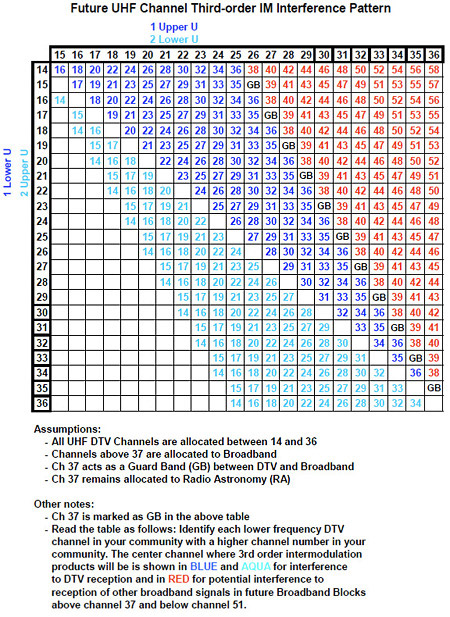Updating the Future of GPS

First, let me update the re-testing of GPS receivers for interference rejection. This was required by the FCC because the first tests in May 2011 showed many GPS receivers of all kinds were jammed by two 5 MHz wide LTE signals (1526–1531 MHz, at the lower end on the MSS band, and 1545–1550 MHz near the upper end of the MSS band). The MSS band is adjacent to the GPS downlink band: 1560–1610 MHz.
LightSquared then proposed they could use one 10 MHz wide LTE signal, 1526-1536 MHz, initially without causing any interference to the millions of GPS receivers in use.
So the FCC gave them another chance. It required re-testing to be completed by Nov. 30. The test data has been delivered to the National Positioning, Navigation, and Timing Executive Committee (ExCom, for short), which issued a report noting that there was significant interference to GPS. The report went to the NTIA, which is still studying it. LightSquared claims these tests were biased against it and called for an investigation.
Additional testing set for January was to involve prototypes of GPS receivers and active GPA antennas for commercial aircraft. The ExCom Report said no additional testing is warranted and there the matter sits as of this writing. Any decision will be by the FCC.
NOW, ABOUT CELL PHONES
The FCC's National Broadband Plan will require re-allocating 120 MHz of TV broadcast spectrum to broadband. Those channels would probably be Channels 30–51 (Channel 37 is not allocated to any broadcaster as it is reserved for radio astronomy). The FCC could decide to re-allocate Channels 38–51 instead of Channels 30–51, (see Fig. 1).

Fig. 1: DTV Channels 14–36 and former TV Channels 38–51, which may suffer interference from certain pairs of TV channels (shown in blue). This graphic anticipates the FCC might decide to re-allocate Channels 38–51 instead of Channels 30–51. Graph created by Stanley Knight. As experience has already shown, TV signals on Channel 51 (692–698 MHz) are causing interference to cell phones in what was Channel 52 (698–704 MHz), but is now known as Block A of the Lower 700 MHz band. Cell phones are operating on the upper adjacent channel to TV Channel 51. This was well known at the time that Channel 52 was auctioned as it was heavily discounted (57 percent).
I believe that the jamming of former Channel 52 (Block A) is in part due to the radiated sideband splatter allowed for DTV transmitters. FCC rules require the radiated power in each adjacent channel be at least 44.71 dB below the ERP in the allocated channel. This boils down to 34 Watts for a station with a 1,000,000 Watts ERP.
This radiated sideband splatter looks like noise to either a DTV receiver tuned to Channel 50 or a cell phone tuned to Block A. Base stations radiate about that much power per base station.
GETTING THE WHOLE STORY
But that is not the whole story. As this column has reported earlier, two undesired DTV signals on certain pairs of channels generate third-order distortion falling principally in Channels 49 and 52 (Block A). The rule is: Given that the strong undesired signals are on channels N+K and N+2K (K is an integer, either positive or negative) the centers of the third-order distortion products will be channels N and N+3K.
Try it out for yourself. If N = 49, N+1 = 50, N+2 = 51 and N+3 = 52, aka Block A. So interference into Block A comes from two sources; that radiated sideband splatter from the Channel 51 transmitter and also third-order distortion products generated in the analog front-end of cell phones and DTV receivers and downconverters.
These noise sources add power-wise. That is, their powers are expressed in microwatts (not dBm) and their sum is converted back to dBm. In addition, strong undesired signals de-sensitize the analog front ends of both kinds of receivers. Not a double whammy, but rather a triple.
Block A can receive a double whammy (de-sensitization and third-order intermodulation) for two TV signals from Channels 48 and 50 to produce noise centered in Block A. Quite a few other channel pairs do the same.
For example, Channels 40 and 46 can jam Channel 52 (Block A). So far, we have seen Channel 52 (Block A) as the center of these third-order distortion products. But every third-order distortion product is three channels wide.
This means that former Channel 53 (Block B now) is going the get hit too. We have measured the relative noise power in the center channel and each side channel. Each side channel is hit by 6 dB less noise than hits the center channel.
Does the FCC know about this problem? They should. They no longer accept applications for Channel 51 because of this interference. Also, DTV interference from two undesired signals on certain channel pairs was explored by the FCC labs in "RF Performance of DTV Converter Boxes—An Overview of FCC Measurements," (IEEE Transactions on Broadcasting, December 2010).
Next month, I plan to write about triplets of undesired DTV signals and what they can do to DTV reception and to cellular telephones in the Lower 700 MHz band.
Note: I apologize for a mix-up in the printed edition of last month's column. The column available for downloading from the Web is correct.
Charles Rhodes is a consultant in the field of television broadcast technologies and planning. He can be reached via e-mail at cwr@bootit.com.
The professional video industry's #1 source for news, trends and product and tech information. Sign up below.
